NIL
How can Drexel Athletics increase their name recognition?
Photo by Kasey Shamis | The Triangle Unlike colleges such as the University of Alabama or Ohio State, Drexel is not typically top of mind when it comes to prestigious athletics programs. As a member of the Coastal Athletic Association, which is not part of the Power 5 conferences (which include the Atlantic Coast Conference, […]
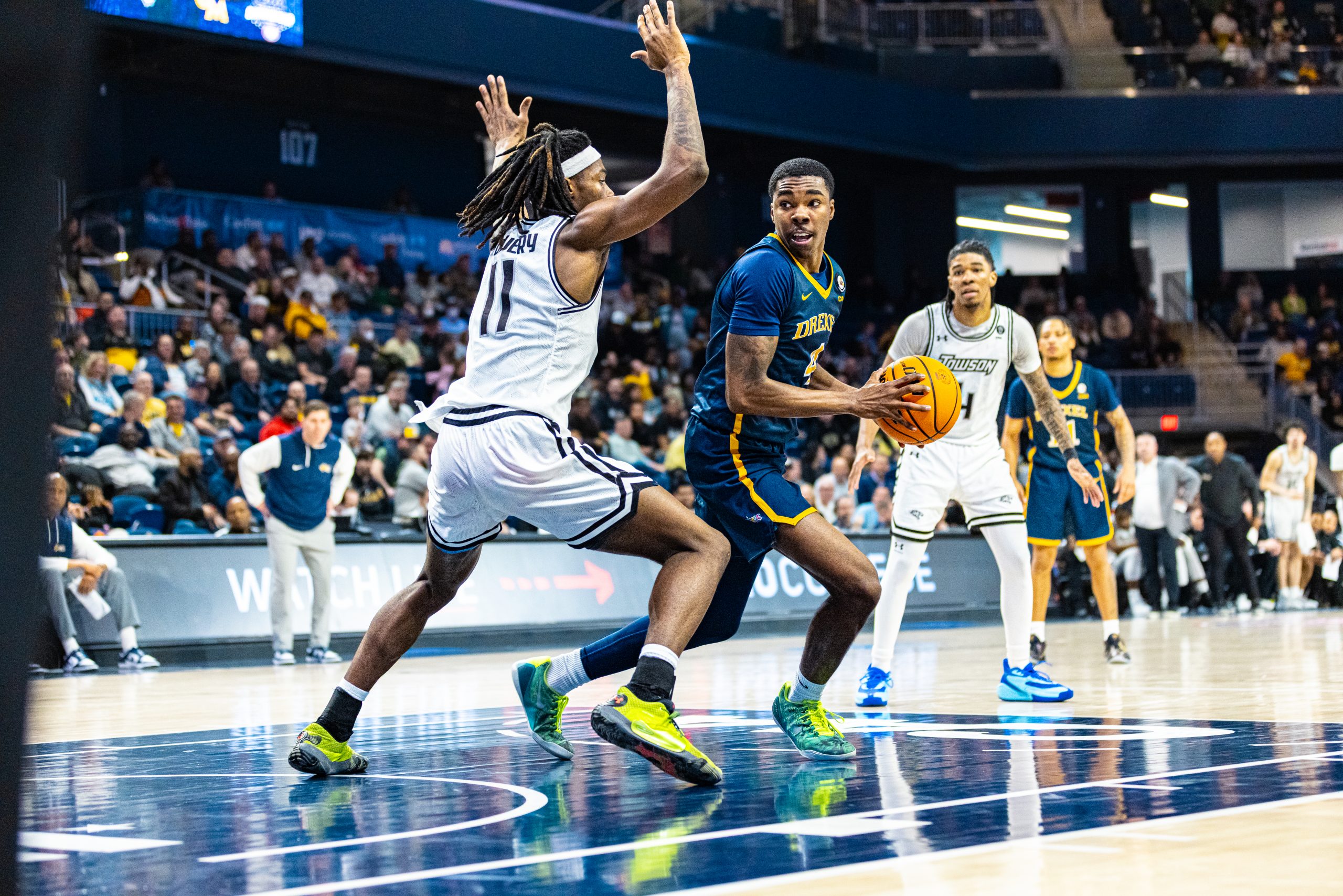
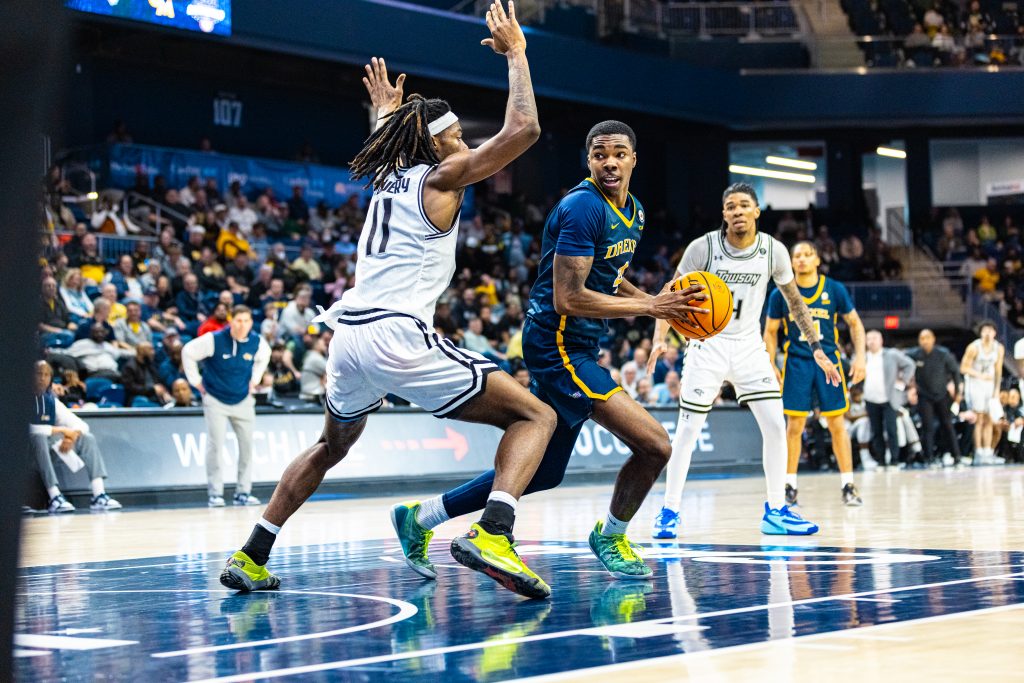
Unlike colleges such as the University of Alabama or Ohio State, Drexel is not typically top of mind when it comes to prestigious athletics programs. As a member of the Coastal Athletic Association, which is not part of the Power 5 conferences (which include the Atlantic Coast Conference, the Big Ten Conference, the Big 12 Conference and the Southeastern Conference), Drexel is classified as a mid-major. This label comes from the conference that a school’s men’s basketball team plays in. In today’s college athletic landscape, which is shaped by name, image and likeness opportunities, this characterization has limited the ability of Drexel’s student-athletes to fully benefit from NIL deals.
Unfortunately for Drexel, the shortcomings of the men’s basketball program have undermined the success of other Drexel athletics programs. Just this season, the men’s and women’s lacrosse teams made trips to the CAA championship, and the women’s team was consistently ranked as one of the top 25 programs in the nation. Both Drexel squash programs rank in the top 10, the rowing teams have dominated in recent competitions, and, in 2024, the women’s basketball team won the CAA championship and competed in March Madness.
Despite these achievements, Drexel is still a relatively unknown school in college athletics. While this can be attributed to a number of factors, perhaps the main issue of name recognition stems from the lack of NIL funding towards athletes.
Since the initial Supreme Court ruling back in 2021, NIL has transformed the landscape of college athletics. The court found that college athletes can profit off of their name, image and likeness on top of the scholarship given to them by their school.
In the four short years since this ruling, how athletes prioritize and decide the schools for their collegiate career has completely changed. Now, on top of following their dreams of professional sports, athletes are also weighing the possibility of making as much revenue as they can.
This dynamic is especially prevalent in men’s basketball, where it is not uncommon for players to enter the transfer portal two or three times. One example of this is PJ Haggerty, who has played on three different teams and recently announced he would be committing to Kansas State after negotiating to receive a $2.5 million NIL package. While athletes from mid-majors are not getting as large of deals as Haggerty, they still stand to benefit financially by transferring to schools with better NIL infrastructure.
During this offseason, Drexel’s men’s basketball team lost four of its most impactful players to the transfer portal. Cole Hargrove and Kobe McGee, who both earned CAA awards this season, transferred to Providence and Florida State University, respectively. Jason Drake announced he would spend his final year at the University of Indiana, and Yame Butler transferred to Butler University after an outstanding season. In recent memory, other standout players such as Amari Williams and Justin Moore have made moves to larger universities.
Despite head coach Zach Spiker’s claim of a culture with “a group that is connected [and] a locker room that loves being around each other” at Drexel, it seems not to be enough as the Dragons continue to lose top talent every offseason. What is the motive for these players entering their names into the NCAA transfer portal if not for potential NIL deals?
While NIL has given numerous opportunities to many different athletes, it has also created problems for universities struggling to keep up with the ever-changing rules. Currently, colleges believe that for NIL to be successful, rules and regulations are needed to stop the disproportionate allotment of money to players. At the time of publication, athletes are allowed to get paid in any amount and without any restrictions. In an attempt to make resources more equitable, the College Sports Commission was created by the Power 5 conferences to establish limitations.
For Drexel and other mid-major institutions, NIL equality is especially important, as they do not have the resources available to attract and keep star athletes. Earlier this year, an article in the Philadelphia Inquirer revealed that Drexel’s NIL resources rank in the bottom half out of all the schools in the CAA, raising concerns for Drexel and its sustainability in the coming years.
In December 2023, Drexel announced that they were launching the Dragon Fire Collective, a NIL Collective intended to support Drexel athletes by creating NIL opportunities for them. However, this effort seems to be inactive at the moment, as the last post on their Instagram was a “day in the life” video featuring Yame Butler from June 2024. Without an active collective to assist students in earning NIL money, Drexel is positioning itself further behind other mid-major universities and running the risk of losing athletes to the transfer portal.
The future of NIL remains uncertain to this day. Pending a judge’s decision on the House vs. NCAA lawsuit, which could allow schools to distribute up to $20.5 million to student-athletes, the CAA’s Board of Directors has voted to opt in to the settlement. If the judge rules in the athletes’ favor, CAA institutions, including Drexel, would be required to share their revenue.
While this decision is expected to come in late June, Drexel has already announced that they will comply with the CAA’s decision and that they are prepared to share revenue with their athletes, as confirmed by the Inquirer.
Other schools in the CAA, such as Stony Brook, have also stated plans to share their revenue with their athletes. On May 28th, they became the first school in the CAA to partner with a third-party platform to help manage revenue sharing. In addition to being an early adopter of the CAA’s mandate, Stony Brook, which has similar athletic success as Drexel, boasts one of the best NIL systems for a mid-major university.
Despite Stony Brook’s collective being launched around the same time as Drexel’s, it has made much more progress. Since the launch of the 1957 Club, the organization has hosted galas, created merchandise and partnered with NIL websites that allow fans to subscribe and gain access to the Seawolves’ athletes. Although these efforts have not entirely prevented players from entering the transfer portal this year, the university is still setting itself up for a better future than Drexel, which does not have any of these opportunities in place.
Drexel will never become the next Notre Dame, but that should not be an excuse to not build up a NIL system that prioritizes keeping players at Drexel, winning games and creating better opportunities for their athletes. With the upcoming ruling regarding revenue sharing, Drexel has the chance to level the playing field with other mid-major programs. Taking action now will make the university more competitive and set up every current and future athlete to have a successful career as a Drexel Dragon.
NIL
5-star commit’s NIL deal revealed
Texas Tech football launched the biggest fireworks on the recruiting end for Fourth of July. Felix Ojo spurned multiple powers for the Red Raiders Friday. Becoming a rare five-star commit for the Lubbock university on the college football recruiting trail. But how were the Red Raiders able to coax the dominating tackle? Especially with Texas, […]
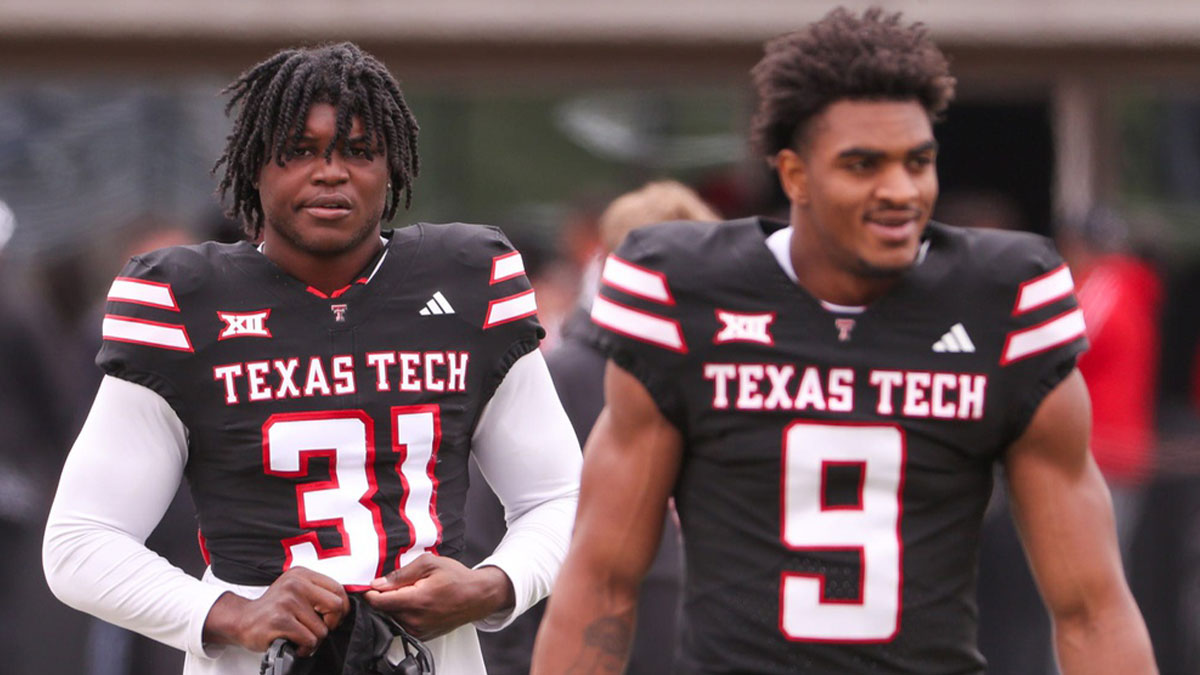
Texas Tech football launched the biggest fireworks on the recruiting end for Fourth of July. Felix Ojo spurned multiple powers for the Red Raiders Friday. Becoming a rare five-star commit for the Lubbock university on the college football recruiting trail.
But how were the Red Raiders able to coax the dominating tackle? Especially with Texas, Michigan, Florida even defending national champion Ohio State all in the final mix for him?
Texas Tech turned to NIL money to convince Ojo that Lubbock is the place for him. The Athletic helped pull back the curtain on the Red Raiders courting Ojo.
Ojo agreed to a three-year, $2.3 million revenue-sharing contract, The Athletic revealed on Saturday. But the outlet also delivered clarity on one reported contract involving the Mansfield, Texas talent.
How much Felix Ojo could earn after joining Texas Tech recruiting class
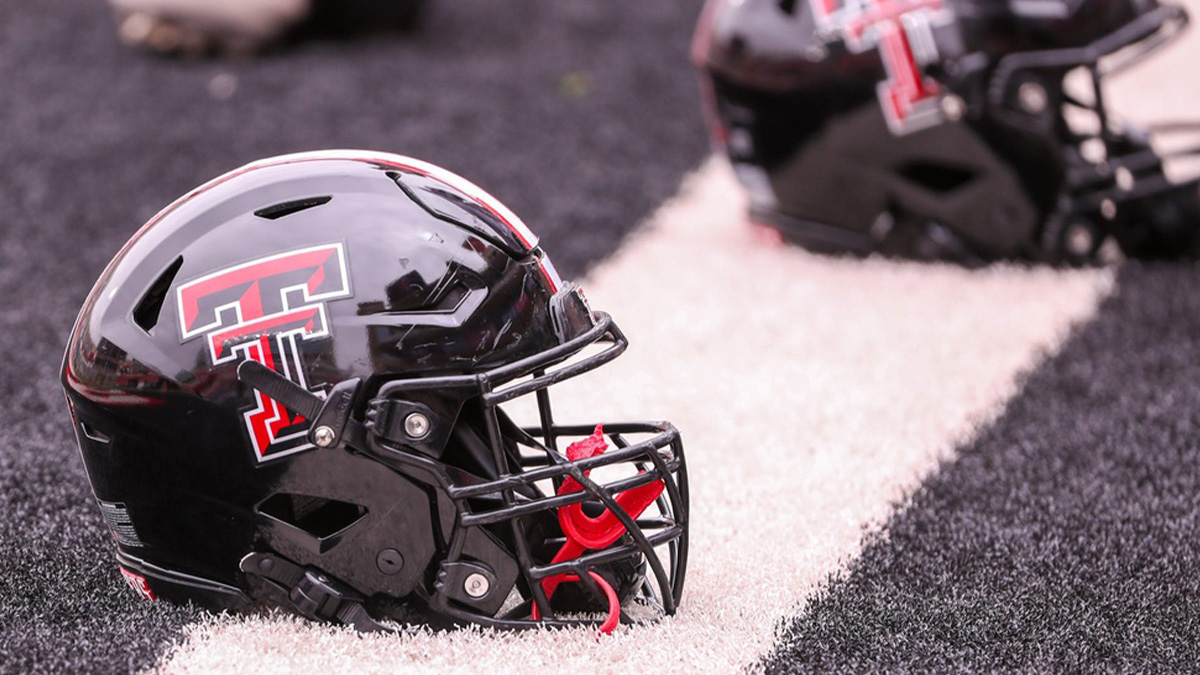
Ojo’s agent Derrick Shelby of Prestige Management spearheaded the NIL process for the newest Red Raider.
Turns out there was a contract figure that needed to be clarified by The Athletic.
“ESPN reported on Friday that Ojo was receiving a three-year deal worth $5.1 million, according to his agent, Derrick Shelby of Prestige Management. Shelby confirmed those figures to The Athletic on Saturday, but three Texas Tech sources refuted that number, with two confirming that Ojo is scheduled to receive an annual compensation of $775,000 per year for three years from Tech’s revenue-sharing pool,” the report reads.
There’s additional figures attached to Ojo. He received a verbal agreement “that can escalate the total value of the contract into the $5 million range.” However, that figure surfaces “if there were a large jump in the revenue sharing cap for schools or if there is minimal regulation of schools’ adhering to the cap.”
Ojo isn’t the only massive recruiting win. Four-star safety Donovan Webb spurned Michigan for Texas Tech on Wednesday. Webb originally was favored to land with the Wolverines per multiple outlets. Texas Tech is now 25th overall in the national recruiting rankings per 247Sports for the 2026 class.
NIL
College sports has a soft salary cap now. How does it work?
College sports has another before and afterdate. Before July 1, 2025 – this Tuesday – athletes could make money off their name, image and likeness (NIL) but not be paid directly by their schools. And after July 1, that has changed, making college sports look and feel even more like the pros. Some of the […]
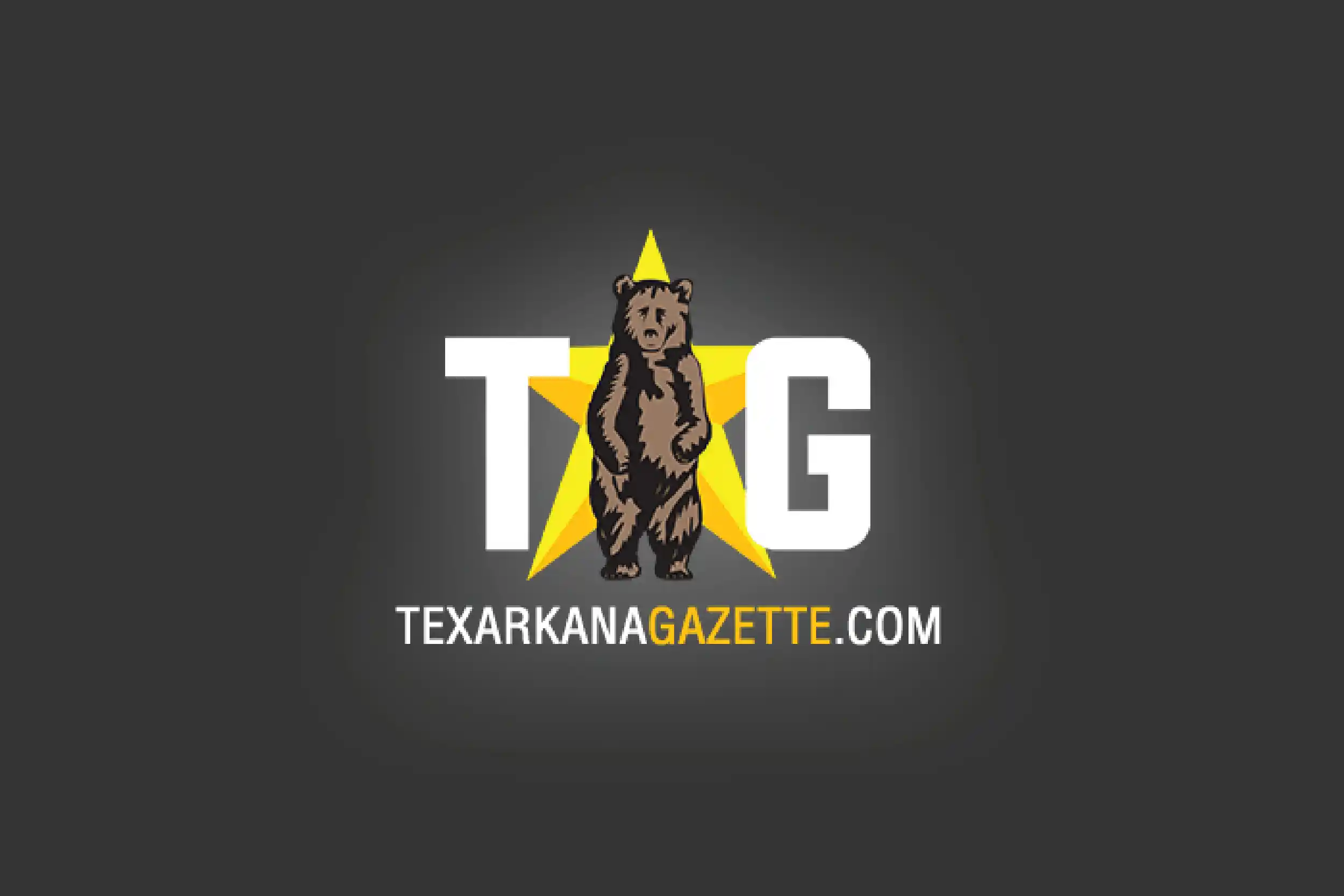
College sports has another before and afterdate.
Before July 1, 2025 – this Tuesday – athletes could make money off their name, image and likeness (NIL) but not be paid directly by their schools. And after July 1, that has changed, making college sports look and feel even more like the pros.
Some of the long-standing differences and caveats still apply. College athletes are not considered employees. Therefore, unlike athletes in the NFL, the NBA, the WNBA, the NHL and MLB, their pay and working conditions were not established through a collective bargaining process. But at least one major change will be familiar to any fan of those professional leagues.
College sports has a (soft) salary cap now. Let’s unpack.
HOW DID THIS COME ABOUT?
At the most practical level, the soft salary cap (or revenue sharing cap) is part of the massive legal settlement approved in early June. Commonly referred to as the House settlement, it consolidated three antitrust cases, all of them challenging past restrictions of college athlete compensation. And in that process, the defendants – the NCAA and the power conferences – agreed to allow schools to share revenue with (or pay) athletes directly for the first time. That officially started Tuesday.
Lawyers for the defendants and plaintiffs settled on an initial annual cap of $20.5 million per school. That is for athletes across sports, though a bulk of the money will go to salaries for football and men’s basketball players. Not every school will spend to the cap, though many power conference programs will. More than 300 Division I schools have opted into the new economic model, meaning they can pay athletes – up to that cap – but also have to abide by new roster limits in each sport. Schools that chose not to opt in are not allowed to pay athletes through revenue sharing. For now, this cap explainer is not relevant to them.
WHY $20.5 MILLION?
The starting cap was calculated by taking 22 percent of the average athletic revenue for power conference schools. In this case, the figures were from the 2023 and 2024 fiscal years. Importantly, only a specific set of revenue streams was considered, which has the attention of the plaintiffs’ attorneys for House. Each year, the settlement will require the NCAA to share the data used to calculate the cap with the plaintiffs’ attorneys. From there, the settlement permits the attorneys to “reasonably audit” the data – and this week, Steve Berman, one of the lead attorneys, told USA Today they are doing just that. In question is whether certain revenue streams were not counted and should be, which could increase the initial number.
Berman told USA Today that he is fine with going ahead with $20.5 million for 2025-26. But if the number were recalculated in an auditing process …
… THAT WOULD BE SIGNIFICANT. WHY?
Great question. Perfect time to ask.
The settlement is a 10-year agreement. The cap will rise and recalculate throughout that span. There will be a 4 percent bump before the second, third, fifth, sixth, eighth and ninth years. There will be a recalculation, using that same 22 percent formula, before the fourth, seventh and 10th years. So if the baseline changed because of an immediate audit of the $20.5 million figure, there could be a trickle-down (or trickle-up?) effect on the initial annual increases.
WHAT COUNTS AS SPENDING TOWARD THE CAP?
Three streams: revenue-sharing money paid to athletes, which will essentially function as salaries; scholarship spending above previous NCAA limits; and other education-related payments, known as Alston money.
Alston money can account for up to $2.5 million per year toward the cap. Same with scholarship spending, though that part is a bit trickier to explain. The settlement permits schools to pay an uncapped amount of scholarship money to a fixed number of athletes across sports. Or in other words: Previous limits on scholarship spending have been replaced by new roster limits, meaning more money distributed to fewer athletes. A football team, for example, can carry a maximum of 105 players and offer 105 full scholarships, if it so chooses. But as far as the $20.5 million cap is concerned, only scholarship money spent above previous NCAA limits – and only up to $2.5 million per year – will count toward it. Confused? Welcome to the life of a longtime college compliance staffer.
WHY HAVE YOU REPEATEDLY REFERRED TO THIS AS A SOFT CAP?
Another great question.
Until this point – before July 1, 2025 – boosters funded five-, six- and seven-figure salaries in football, men’s basketball and, to a lesser extent, women’s basketball and other sports. With rules established by the settlement, the NCAA and the power conferences hope to change that. Any NIL deal that exceeds $600 will have to go through a clearinghouse, which will trigger a review of who is paying and what services they will receive from the athlete, among other factors. The hope, for the leaders of college sports, is to eliminate situations in which an athlete receives $500,000 for a few social media posts.
At the highest levels of the biggest sports, those deals have fueled the NIL economy for the past four years. Donor groups, known as NIL collectives, typically have brokered them. Many legal experts are skeptical that the enforcement efforts would hold up against more antitrust suits.
And throughout the history of college sports, there’s at least one certainty: Motivated rich people will find a way to help their teams win. For that reason – that donors and NIL collectives will help schools spend above the $20.5 million barrier – it feels most responsible to call it a soft cap. The whole system could put at least some athlete payments back under the table, such as when they used to be delivered in McDonald’s bags before the NCAA changed its NIL rules in 2021.Plus, beyond donor money, schools and collectives can still help athletes land brand deals to enhance their income.
At the top of college football and basketball, spending from the revenue-sharing pool will be viewed as a baseline. It will, as ever, take a lot more money to thrive.
NIL
Paul Finebaum Claims College Football Playoff Team is Better Off Despite Losing Elite QB
Paul Finebaum Claims College Football Playoff Team is Better Off Despite Losing Elite QB originally appeared on Athlon Sports. The quarterback position is often considered the most crucial in all of sports. The quarterback is usually the first to take the snap, and it’s his responsibility to make the right decisions in both the passing […]
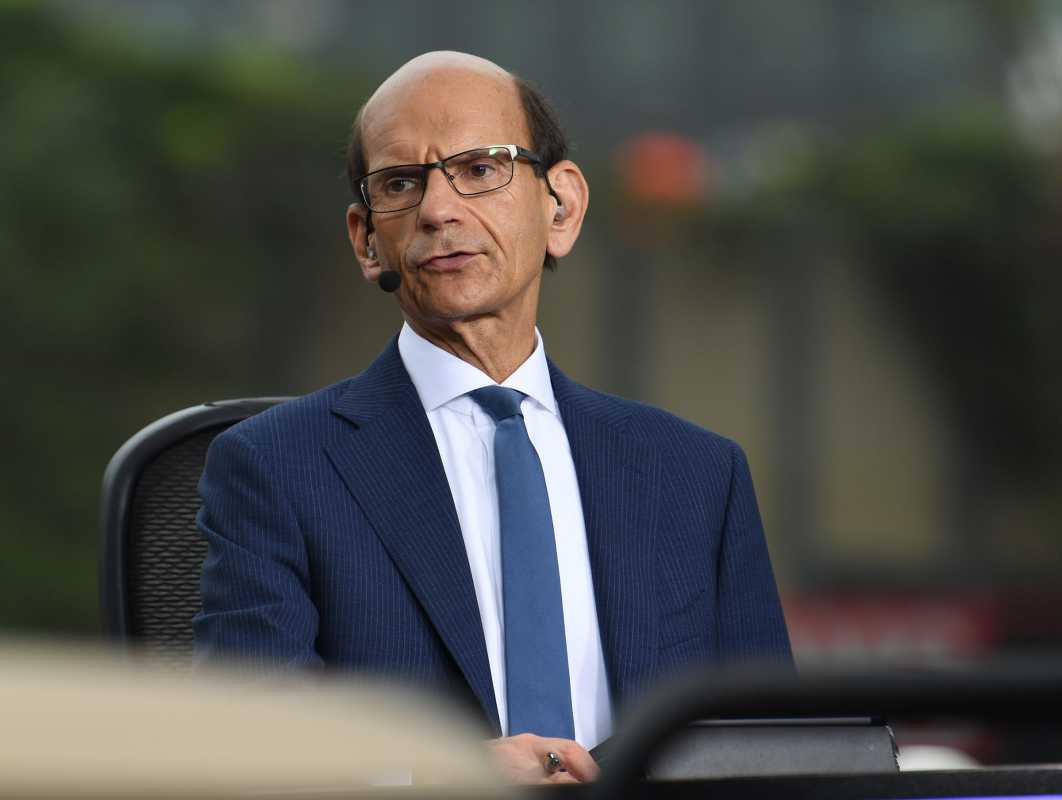
Paul Finebaum Claims College Football Playoff Team is Better Off Despite Losing Elite QB originally appeared on Athlon Sports.
The quarterback position is often considered the most crucial in all of sports. The quarterback is usually the first to take the snap, and it’s his responsibility to make the right decisions in both the passing and running games, especially given the variety of options teams employ today to score points.
Advertisement
As a result, losing a top quarterback is typically not advantageous. However, ESPN’s Paul Finebaum believes that one team has benefited this offseason from the loss of its star quarterback. That team is the Tennessee Volunteers, who unexpectedly lost redshirt sophomore quarterback Nico Iamaleava to the transfer portal.
Iamaleava entered the portal just before the spring game, reportedly due to a dispute over an NIL contract. He transferred to the UCLA Bruins, while a former Appalachian State quarterback, who was initially committed to UCLA, changed his commitment and instead joined Tennessee.
On “The Paul Finebaum Show,” the SEC Network analyst expressed his belief that Tennessee is in a better position without Iamaleava.

Tennessee head coach Josh Heupel talks to Tennessee quarterback Nico Iamaleava.Caitie McMekin/News Sentinel / USA TODAY NETWORK via Imagn Images
“It’s pretty obvious the chemistry was not great last year,” Finebaum said. “I think just from a locker room standpoint, Tennessee is in much better shape. Now, is Aguilar the quarterback potentially that Nico was? No. I don’t think there’s any doubt about that. But I don’t think he has to be elite. He just has to get the ball down the field, which Nico could not do very often.”
Advertisement
Finebaum has been quite critical of Iamaleava this offseason. He recently remarked that he believes it won’t be difficult for another player, Aguilar, to have a better season than Iamaleava did last year. Finebaum anticipates that Aguilar will outshine Iamaleava’s performance in 2024.
Despite the criticism, Iamaleava played a crucial role in leading the Volunteers to their first appearance in the College Football Playoff, demonstrating flashes of his elite potential. As a former five-star recruit and the top player in the 2023 class, he had an impressive inaugural season as a starter, throwing for 2,616 yards, 19 touchdowns, and just five interceptions.
In contrast, Aguilar accumulated 6,760 passing yards, 56 touchdowns and 24 interceptions while completing 60.1% of his passes over his two seasons at Appalachian State. He also rushed for 452 yards and five touchdowns.
The Volunteers are set to kick off their season on Aug. 30 against the Syracuse Orange at noon ET.
Related: Paul Finebaum Names Major College Football QB Whose Career Has Been Set Back
This story was originally reported by Athlon Sports on Jul 5, 2025, where it first appeared.
NIL
Texas Tech’s latest recruiting coup: 5-star offensive tackle Felix Ojo
By Sam Khan Jr., Bruce Feldman and Justin Williams Texas Tech continues to be a major player in college sports’ new era of player compensation, with the latest evidence coming in the form of a football recruiting coup. The Red Raiders landed a commitment on Friday from five-star offensive tackle Felix Ojo, the No. 1 […]

By Sam Khan Jr., Bruce Feldman and Justin Williams
Texas Tech continues to be a major player in college sports’ new era of player compensation, with the latest evidence coming in the form of a football recruiting coup.
The Red Raiders landed a commitment on Friday from five-star offensive tackle Felix Ojo, the No. 1 recruit in Texas and a top 10 national recruit in the 2026 class, after the parties agreed to a three-year, $2.3 million revenue-sharing contract, two school sources confirmed to The Athletic on Saturday.
Ojo, a 6-foot-6, 275-pound recruit from Lake Ridge High in Mansfield, Texas, was one of the most heavily recruited prospects in the country, with 50 scholarship offers, according to 247Sports. In addition to Texas Tech, Ojo took official visits to Colorado, Florida, Michigan, Notre Dame, Ohio State, Ole Miss, Texas and Utah. If Ojo officially signs with the Red Raiders during the December signing period, he would be the highest-rated prospect Texas Tech has signed in the modern recruiting era and the second five-star, joining 2024 receiver Micah Hudson. Ojo is the No. 7 recruit in the 247Sports Composite and No. 6 in the On3 Industry rankings.
It was a bit of a surprise on the recruiting trail, as Ojo’s reported finalists were Texas, Ohio State, Michigan and Florida, with the Longhorns and Buckeyes leading the race in the home stretch, according to Rivals.com. But Texas Tech, which has proved to be one of the biggest spenders in name, image and likeness compensation in the last year, remained firmly in the recruitment — even if not publicly — since Ojo’s official visit to Lubbock in April.
During his commitment announcement on Friday, Ojo initially put on a Longhorns hat before switching to a Texas Tech hat.
Mansfield Lake Ridge 5-star offensive lineman Felix Ojo first puts on a Texas hat, and the crowd goes wild, then he pulls a surprise and says he is actually committing to Texas Tech.#txhsfb @SportsDayHS @dctf @MISDathletics @247sports @TexasTechFB @TexasFootball @Rivals pic.twitter.com/WwbhCpjS3S
— Greg Riddle (@DMNGregRiddle) July 4, 2025
ESPN reported on Friday that Ojo was receiving a three-year deal worth $5.1 million, according to his agent, Derrick Shelby of Prestige Management. Shelby confirmed those figures to The Athletic on Saturday, but three Texas Tech sources refuted that number, with two confirming that Ojo is scheduled to receive an annual compensation of $775,000 per year for three years from Tech’s revenue-sharing pool. Ojo’s deal, according to a Tech source, includes a verbal agreement that can escalate the total value of the contract into the $5 million range if there were a large jump in the revenue sharing cap for schools or if there is minimal regulation of schools’ adhering to the cap, in much the way there has been minimal regulation of NIL since its institution in 2021. Shelby declined to share a copy of the contract with The Athletic but stood by the initially reported numbers.
The news of Ojo’s commitment and contract agreement represents the continued changing tides of college recruiting. After the approval of the House v. NCAA settlement and implementation of revenue sharing, colleges can allocate up to roughly $20.5 million to pay athletes across their sponsored sports. Schools could begin directly paying players on their current roster on July 1. They can verbally negotiate deals with future recruits and send official written scholarship offers and revenue-sharing contract offers beginning Aug. 1 of the recruit’s senior year of high school, but those contracts cannot be signed until each respective sport’s signing period begins, which is Dec. 3 for the FBS.
The national letter of intent program, which used to bind a recruit to a school, was eliminated by the NCAA in October and replaced by financial aid agreements that prohibited other schools from recruiting a prospect once signed.
Texas Tech has been aggressive in the NIL space in recent years and will continue to be in the era. The Matador Club, the school’s NIL collective, was one of the first to implement team-wide NIL contracts for football players in 2022. The Red Raiders made a splash in softball, signing former Stanford pitcher NiJaree Canady to a one-year deal worth more than $1 million last summer (Canady led Tech to the Women’s College World Series final, where the Red Raiders lost to Texas). In men’s basketball, the team retained second-team All-American JT Toppin to a deal of more than $3 million in April.
Tech’s football team spent more than $10 million on its transfer portal class this offseason, landing multiple highly coveted transfers, including former North Carolina offensive tackle Howard Sampson, former Stanford edge rusher David Bailey and former Georgia Tech edge rusher Romello Height. The Red Raiders’ portal signing class is ranked No. 1 by On3 and No. 2 by 247Sports.
Billionaire oil magnate Cody Campbell, a former Texas Tech offensive lineman, co-founder of the Matador Club and chairman of the school’s board of regents, told The Athletic last month that Tech would spend an estimated $55 million combined in revenue-sharing dollars and NIL money for players across the athletic department for the 2025-26 cycle. After the House settlement approval, the Matador Club merged with Texas Tech’s Red Raider Club, the longtime donor arm of Texas Tech athletics.
Ojo’s commitment was part of a successful recruiting week for Texas Tech, as they also landed commitments from four-star running back Ashton Rowden and four-star cornerback Donovan Webb. Ojo, Rowden and Webb are the three highest-rated commits in Tech’s 2026 class, which is currently No. 24 in the country, according to 247Sports. Texas Tech is also considered to be in a strong position to land a commitment from Cooper Hackett, a five-star offensive tackle in the 2027 class from Fort Gibson, Okla. Both 247Sports and On3 have predicted Tech to land a commitment from Hackett.
If Texas Tech is able to close on Ojo and Hackett, that would make three consecutive years of the Red Raiders signing a five-star high school recruit after not landing one from 2000 to 2023.
(Photo of Texas Tech head coach Joey McGuire: Justin Ford / Getty Images)
NIL
PFF ranks Top 50 college football players ahead of 2025 season
The 2025 college football season is officially just 50 days away, as week zero kicks off on August 23. Using their data and grading, PFF identified the most dominant and valuable players in the country. They ranked the top 50 college football players ahead of the 2025 season. Alabama, Penn State and Texas lead the […]

The 2025 college football season is officially just 50 days away, as week zero kicks off on August 23.
Using their data and grading, PFF identified the most dominant and valuable players in the country. They ranked the top 50 college football players ahead of the 2025 season.
Alabama, Penn State and Texas lead the way with five players in the top 50, followed by Clemson with four. Ohio State however boasts the top two players in the country, while Clemson has three in the top-10.
True sophomore wide receiver Jeremiah Smith was tabbed as the best player in the country heading into the 2025 season.
As a freshman, Smith was a key cog in Ohio State‘s first National Championship winning team since 2014. With Will Howard at quarterback, Smith hauled in 76 receptions for 1,315 yards and 15 touchdowns. He was named a First Team All-American, earned First Team All-Big Ten honors and was the Rose Bowl Offensive MVP. Big things are expected from Smith as a sophomore, who shattered Cris Carter‘s Ohio State freshman receiving records last season.
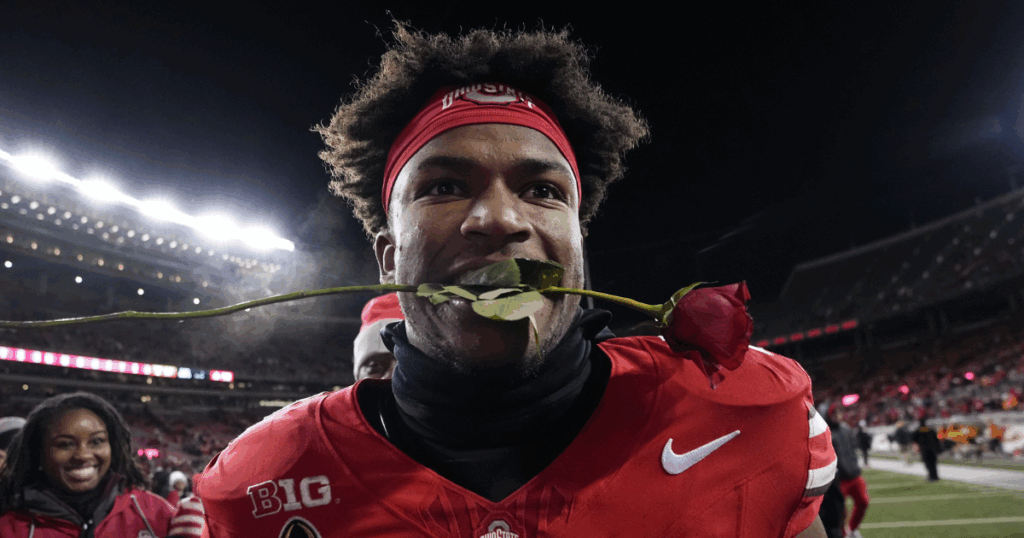
In Downs’ first season in Columbus in 2024, he was named a unanimous First Team All-American and was named the Big Ten Conference’s Defensive Back of the Year. He, just like Smith, was a key member of a National Championship winning team last season.
As a sophomore, the Alabama transfer totaled 81 tackles, 7.5 TFL, 0.5 sack and two interceptions. He is lauded as the best defensive player in the country heading into the 2025 season.
Junior defensive lineman Peter Woods is the first of three Clemson Tigers in the top-10 of PFF’s top-50 rankings.
Woods emerged as a defensive monster in the ACC last season, recording 28 tackles with 8.5 TFL and three sacks en route to an All-ACC Honorable Mention last season. Over his first two years of college football, he is both the highest-graded and most valuable returning Power Four defensive tackle, according to PFF WAA.
Notre Dame‘s Jeremiyah Love is tabbed as the highest ranked running back in the country, fresh off a 2024 campaign in which he rushed for 1,125 yards and 17 touchdowns.
His defining moment came in the Fighting Irish’s Allstate Sugar Bowl victory over Indiana, when he rushed for a 98-yard touchdown. Love was the second-most-valuable running back in college football in 2024, according to PFF WAA, and his 91.0 PFF overall grade ranked fifth.
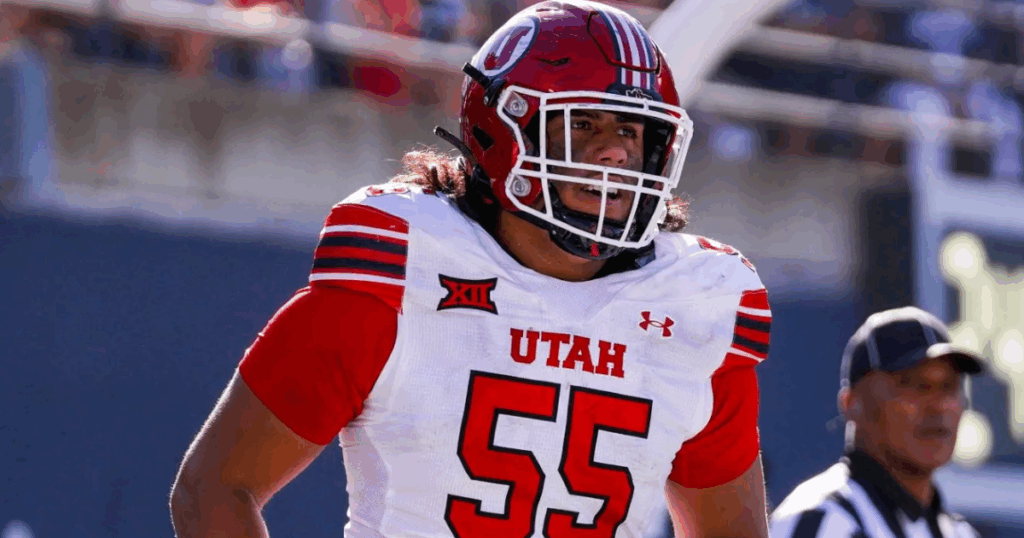
OT Spencer Fano is just the latest Utah offensive tackle to earn national praise, as he is the highest ranked offensive lineman in the country heading into the 2025 season.
Fano was named a PFF First Team All-American last season, along with being tabbed to the All-Big 12 First Team. He brings a wealth of experience with 25 career games played for an Utah team looking to get back in the College Football Playoff conversation. The Spanish Fork, UT native’s 93.0 PFF overall grade in 2024 led all FBS tackles.
Moore was a standout at his position as a true freshman last season, as he was named the 2024 FWAA Freshman Defensive Player of the Year along with being named a FWAA Freshman All-American.
In 16 games, Moore recorded 48 tackles, 2 TFL, 11 pass break ups and two interceptions for a Fighting Irish team that fell just shy of a National Championship. He finished his true freshman season as the third-most-valuable cornerback in college football, according to PFF WAA, trailing only Texas‘ Jahdae Barron and Colorado‘s Travis Hunter.
Clemson‘s Cade Klubnik has been tabbed as the top-ranked quarterback in the country heading into the 2025 season.
As a junior in 2024, Klubnik passed for 3,639 yards, 36 touchdowns and just six interceptions. He is one of only three two-time ACC Championship Game MVPs all-time and ranks in the top five in Clemson history in nearly every passing category. He has been lauded as a pre-season favorite for Heisman, joining Texas‘ Arch Manning and LSU‘s Garrett Nussmeier.
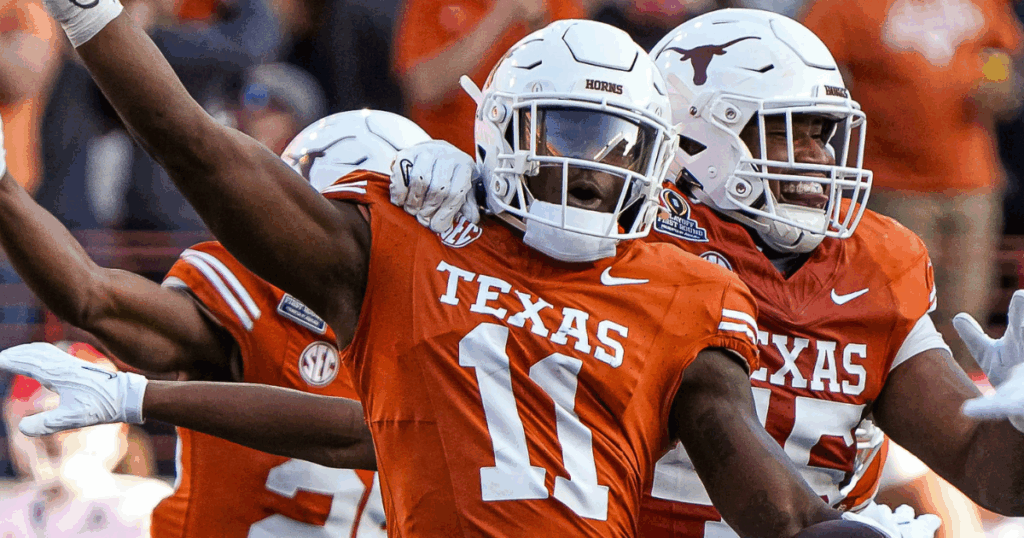
The 2024 Shawn Alexander National Freshman of the Year award winner heads into the 2025 season as one of the best defensive players in the country.
Simmons exploded in Texas‘ first season in the SEC last season, recording 48 tackles, 14 TFL and nine sacks as a true freshman. He selected to Freshman All-America teams by ESPN, FWAA, PFF and The Athletic and was named to the SEC All-Freshman Team.
Much like Simmons, Stewart emerged as a superstar freshman last season for Shane Beamer‘s Gamecocks.
As one of the nation’s top pass rusher last season, the Washington, D.C. native recorded 23 tackles, 10.5 TFL and 6.5 sacks with three forced fumbles and two fumble recoveries. Look for Stewart and Simmons to battle over the SEC Defensive Player of the Year honor this season.
Clemson EDGE rusher T.J. Parker is the last of three Clemson players to round out the top-ten.
As a sophomore last season, Parker recorded 57 tackles, 19.5 TFL and 12 sacks. His 12 sacks led all power-four rushers last season, leading him to be currently projected as the No. 2 overall pick in PFF’s 2026 NFL Mock Draft.
Players 11-50
11. C Jake Slaughter, Florida
12. WR Ryan Williams, Alabama
13. CB Jermod McCoy, Tennessee
14. LB Anthony Hill Jr., Texas
15. EDGE Reuben Bain Jr., Miami
16. G Ar’maj Reed-Adams, Texas A&M
17. QB Sam Leavitt, Arizona State
18. WR Jordyn Tyson, Arizona State
19. TE Eli Stowers, Vanderbilt
20. S Koi Perich, Minnesota
21. QB Carson Beck, Miami
22. QB Drew Allar, Penn State
23. QB Garrett Nussmeier, LSU
24. CB D’Angelo Ponds, Penn State
25. S Dillon Thieneman, Oregon
26. S Michael Taaffe, Texas
27. CB Avieon Terrell, Clemson
28. RB Isaac Brown, Louisville
29. LB Taurean York, Texas A&M
30. EDGE Keldric Faulk, Auburn
31. RB Nick Singleton, Penn State
32. RB Jonah Coleman, Washington
33. CB Chandler Rivers, Duke
34. EDGE LT Overton, Alabama
35. EDGE Tyreak Sapp, Florida
36. EDGE Mikail Kamara, Indiana
37. RB Makhi Hughes, Oregon
38. WR Elijah Sarratt, Indiana
39. DT Zane Durant, Penn State
40. DL Tim Keenan III, Alabama
41. OT Francis Mauigoa, Miami
42. S KJ Bolden, Georgia
43. OT Kadyn Proctor, Alabama
44. LB Whit Weeks, LSU
45. LB Austin Romaine, Kansas State
46. CB Malik Muhammad, Texas
47. S Bray Hubbard, Alabama
48. EDGE Dani Dennis-Sutton, Penn State
49. S Terry Moore, Duke
50. QB Arch Manning, Texas
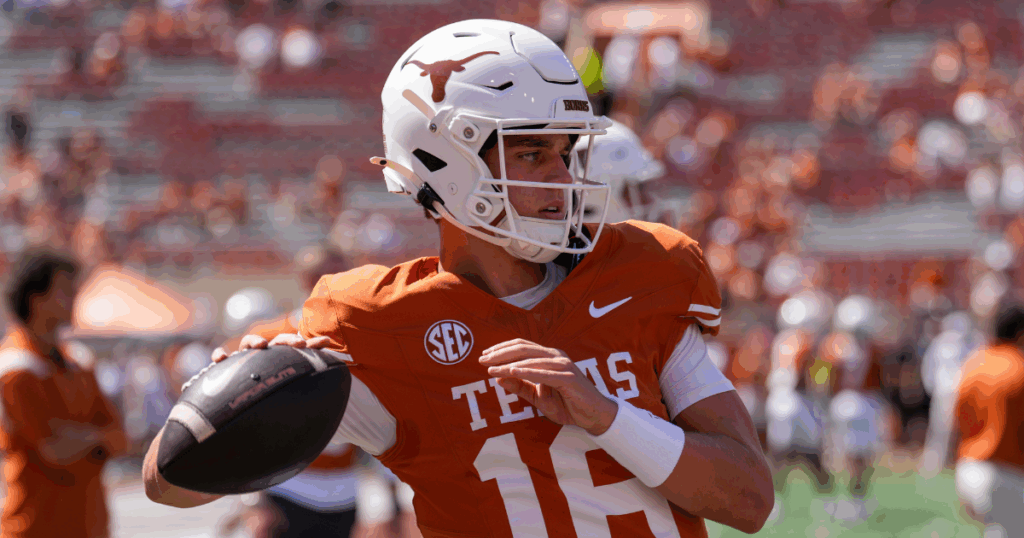
NIL
Hugh Freeze explains how House settlement has impacted Auburn, ability to recruit
Tuesday marked the start of a new era in college athletics as the House v. NCAA settlement took effect. Revenue-sharing officially arrived, and Hugh Freeze said the new cap has an impact on recruiting. Under the settlement, schools can directly share up to $20.5 million with athletes through rev-share. That figure is expected to increase […]
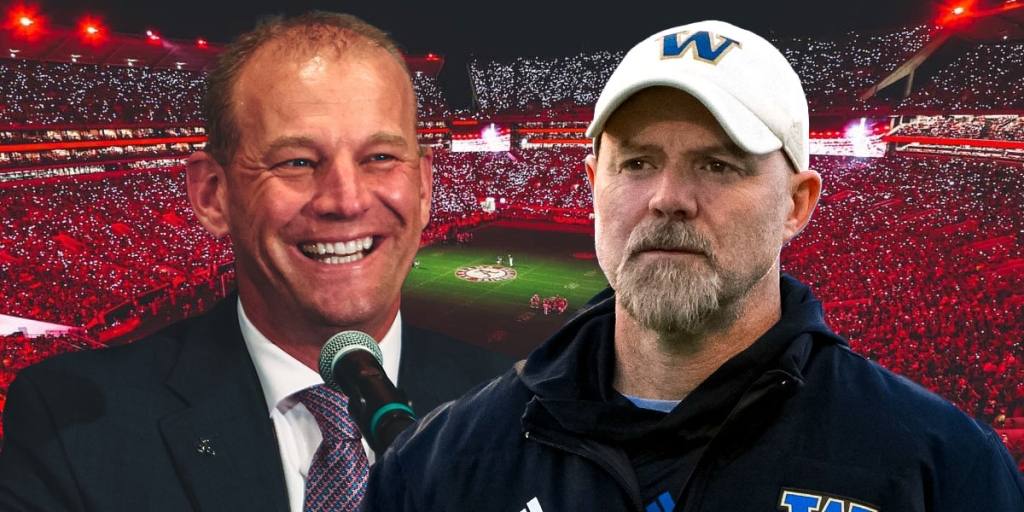
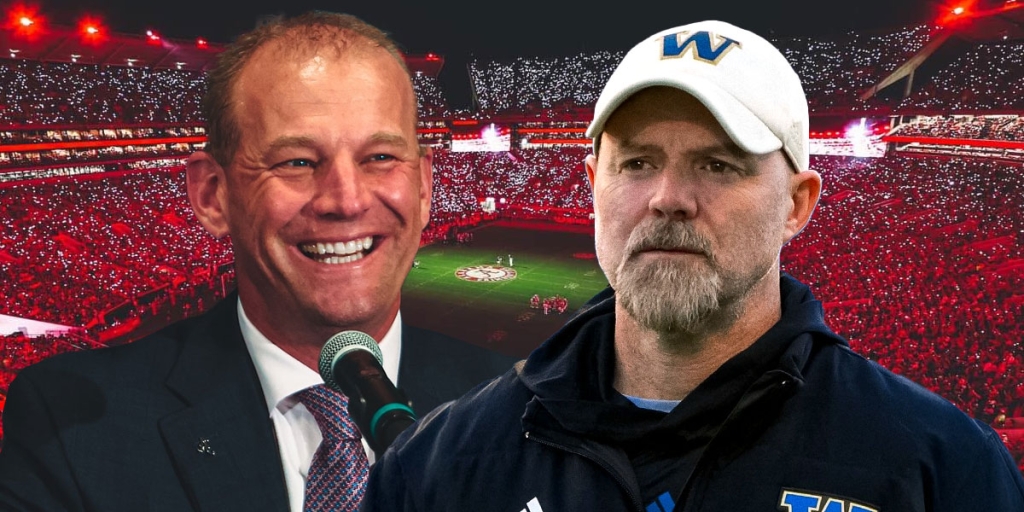
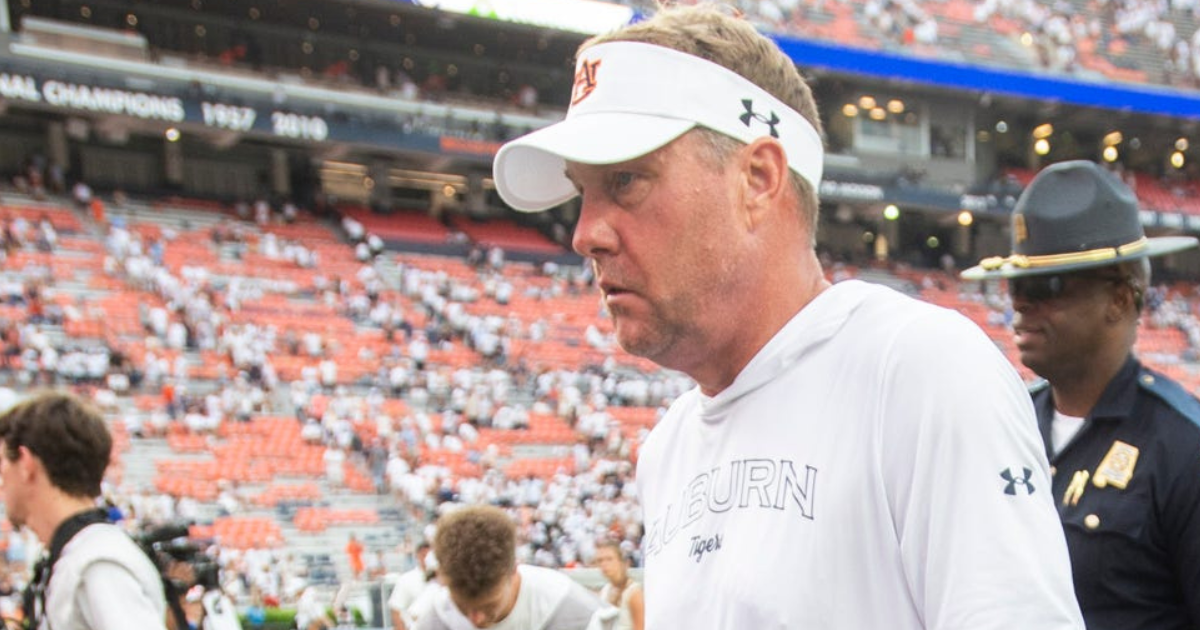
Tuesday marked the start of a new era in college athletics as the House v. NCAA settlement took effect. Revenue-sharing officially arrived, and Hugh Freeze said the new cap has an impact on recruiting.
Under the settlement, schools can directly share up to $20.5 million with athletes through rev-share. That figure is expected to increase annually under the 10-year agreement. The first payments came down this week.
But with the cap, Freeze said Auburn had to worry about retaining players on the roster rather than signing a larger high school class. He added the Tigers are following their interpretation of the settlement as they focus on retention, particularly at positions such as wide receiver.
“It’s quite different,” Freeze said of the new landscape. “First of all, you want to make sure you are operating with what the settlement says, and we think we are. We’re going by what we believe to be the accurate interpretation of it. It’s not really to our advantage to what we’re doing right now because others, I think, are operating in a different manner. But the main thing that I don’t think people understand is retaining your current roster. It used to not affect high school recruiting. You were going to sign your 20-25 guys. But now, with the salary cap, you have to look at a room like our wide receiver room where on paper, we’re not losing a single kid, and we’ve got to retain those guys because I like that room a whole lot.
“So you don’t have the means, so to speak, to go after the number of high school receivers that you would normally go after because you can’t really – again, on paper, we’re not losing anyone and I don’t want to lose one. I really like that room. I love our young d-linemen. It’s kind of difficult. You’re sitting here trying to sign a class when you really don’t know what your current roster will be in January. So that’s a challenge, but you have to operate within the manner of what the settlement really says and the interpretation that we’ve received, and that’s what we’re doing.”
Hugh Freeze: Roster retention is ‘main thing’
Freeze has seen success on the high school recruiting trail since he took over at Auburn in 2024. The Tigers had the nation’s No. 8-ranked class in both 2024 and 2025, but the 2026 cycle is off to a slower start with just seven commitments.
Still, Hugh Freeze expects Auburn to climb back up the recruiting rankings once National Signing Day comes around in December. But he still noted how rev-share makes it more “challenging” to balance player retention vs. filling open spots.
“We’re talking about a staff that’s put together two Top-10 classes, and here we are, we’re really not in that realm right now,” Freeze said. “Do I think we will be in December? I do. I believe that wholeheartedly. We had over 50 visits in June and I thought most families felt like, ‘Man, this is a great place to be.’ But we’ve got to figure all this other [stuff] out. I know John [Cohen] is going to talk more in depth about the parameters to which we’re operating.
“It is more challenging, for sure, but the main thing to me is retaining our current roster and then filling the gaps with, obviously, elite talent from whether it’s the portal or high school recruiting. But retaining that roster does affect the way you approach recruiting, and that’s new. That used to not be the case. I mean, you were going to sign some kids and figure out the numbers on the back end. But you can’t do that and when you have to be under the revenue-sharing cap.”
-

 College Sports1 week ago
College Sports1 week agoWAC to Rebrand to UAC, Add Five New Members in 2026
-
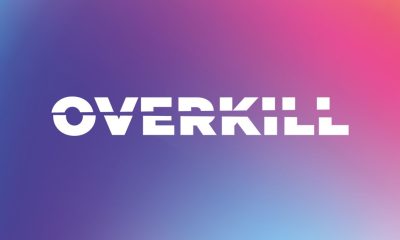
 Technology3 weeks ago
Technology3 weeks agoPolar is teasing a Whoop alternative without subscription
-

 Motorsports5 days ago
Motorsports5 days agoWhy Cosmetics are Making Up for Lost Time in Women’s Sports
-

 Technology3 weeks ago
Technology3 weeks agoI loved the Whoop MG, but didn’t love the price: that’s why I’m excited about this mysterious new fitness band from a major Garmin rival
-

 NIL3 weeks ago
NIL3 weeks agoGo Straight to Collective Bargaining (Part II) ✦ OnLabor
-

 Professional Sports2 weeks ago
Professional Sports2 weeks agoAlex Pereira responds to rumors of UFC heavyweight title fight with threatening message
-

 College Sports3 weeks ago
College Sports3 weeks agoLocked On Women's Basketball
-
College Sports2 weeks ago
Women's Basketball Thanks Shannon LeBeauf for 14 Seasons
-

 Technology1 week ago
Technology1 week agoPet fitness and wellness trends for a healthier and happier dog
-

 College Sports2 weeks ago
College Sports2 weeks agoAlabama Basketball





































